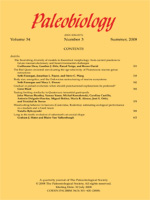Better understanding of the functional biology of early angiosperms may clarify ecological factors surrounding their origin and early radiation. Phylogenetic studies identify Amborella, Nymphaeales (water lilies), Austrobaileyales, and Chloranthaceae as extant lineages that branched before the radiation of core angiosperms. Among living plants, these lineages may represent the best models for the ecology and physiology of early angiosperms. Here we combine phylogenetic reconstruction with new data on the morphology and ecophysiology of these plants to infer early angiosperm function. With few exceptions, Amborella, Austrobaileyales, and Chloranthaceae share ecophysiological traits associated with shady, disturbed, and wet habitats. These features include low and easily light-saturated photosynthetic rates, leaf anatomy related to the capture of understory light, small seed size, and clonal reproduction. Some Chloranthaceae, however, possess higher photosynthetic capacities and seedlings that recruit in canopy gaps and other sunny, disturbed habitats, which may have allowed Cretaceous Chloranthaceae to expand into more diverse environments. In contrast, water lilies possess ecophysiological features linked to aquatic, sunny habitats, such as absence of a vascular cambium, ventilating stems and roots, and floating leaves tuned for high photosynthetic rates in full sun. Nymphaeales may represent an early radiation into such aquatic environments. We hypothesize that the earliest angiosperms were woody plants that grew in dimly lit, disturbed forest understory habitats and/or shady streamside settings. This ecology may have restricted the diversity of pre-Aptian angiosperms and living basal lineages. The vegetative flexibility that evolved in the understory, however, may have been a key factor in their diversification in other habitats. Our inferences based on living plants are consistent with many aspects of the Early Cretaceous fossil record and can be tested with further study of the anatomy, chemistry, and sedimentological context of Early Cretaceous angiosperm fossils.
How to translate text using browser tools
1 January 2004
Dark and disturbed: a new image of early angiosperm ecology
Taylor S. Feild,
Nan Crystal Arens,
James A. Doyle,
Todd E. Dawson,
Michael J. Donoghue
ACCESS THE FULL ARTICLE

Paleobiology
Vol. 30 • No. 1
January 2004
Vol. 30 • No. 1
January 2004




